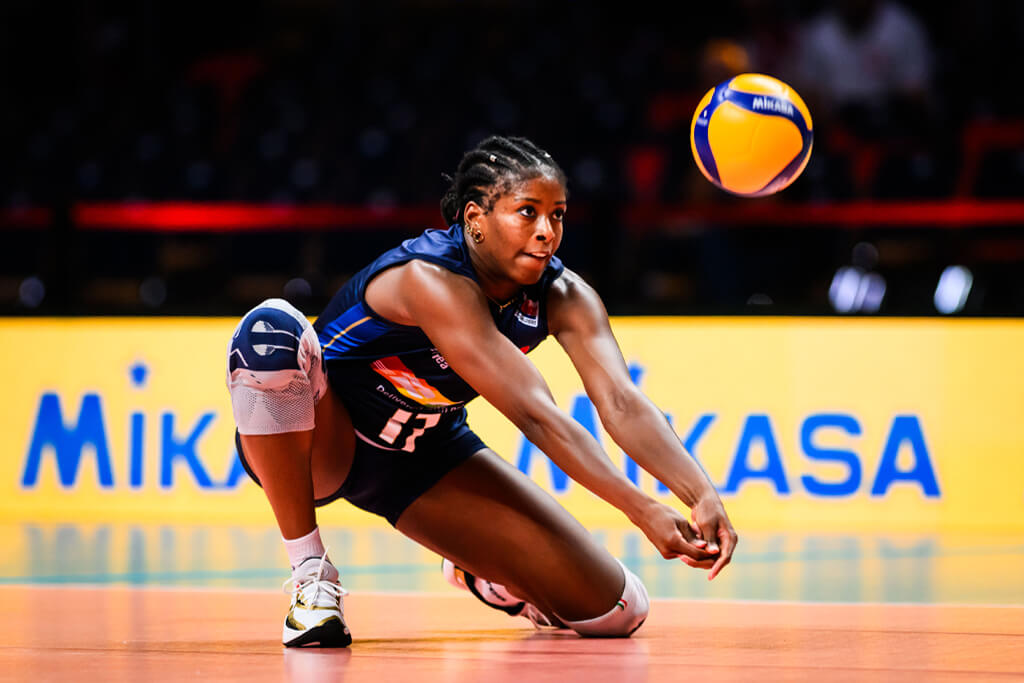Ultimate Guide to Volleyball Passing: Techniques, Drills, and Mistakes to Avoid
 Matt Nikishin
Matt Nikishin
Passing is the most critical skill in volleyball, as it sets up the entire play. A well-executed pass ensures a smooth transition to the setter and ultimately leads to a strong offensive attack.
Whether you're a beginner or an experienced player, refining your passing technique can significantly improve your game.
In this guide, we'll break down the correct passing form, strategies to improve reaction time, effective drills, and the common mistakes to avoid when passing in volleyball.
Correct Passing Form ⬇️
Key Elements of a Strong Pass
Platform Position: Keep your arms straight and together with wrists locked. Your elbows should be forming a flat surface for the ball to bounce off.
Feet Position: Stand in an athletic stance with your knees bent, feet shoulder-width apart, and weight on the balls of your feet.
Angles Matter: The ball will travel in the direction that your platform is facing. Adjust your arm angle instead of swinging your arms to direct the ball accurately 📐
Why This Works
A solid passing form helps control the height, speed, and direction of the ball, reducing errors and improving overall team play.
Improve Reaction Time
Passing isn’t just about technique—it’s about quick decision-making and fast reactions. Here’s how you can react better to serves and attacks:
Read the Server: Observe their toss, contact, and body position to predict where the ball is headed.
Stay Low: Being in a low, ready position allows for quicker reactions and smoother adjustments.
Move Efficiently: Instead of reaching for the ball, take small, quick steps to get into position before making contact.
Drill for Faster Reaction Time
Have a coach or teammate serve from different areas of the court to different zones.
Focus on reading their hand placement and reacting before it crosses the net.
Pass in a balanced stance with a hold of your platform.
Drills to Practice Passing
Practicing passing through targeted drills helps improve accuracy, consistency, and confidence. Here are three essential drills:
Wall Passing Drill:
Stand 6–8 feet away from a wall.
Pass the ball against the wall and control the rebound.
Focus on maintaining a steady platform and improving ball control.
Goal: Complete 50 consecutive passes without breaking form.
Partner Toss & Pass Drill:
Have a partner toss balls at different angles.
Move your feet quickly and adjust your platform angle to direct the ball to a target.
Goal: Pass accurately to the setter’s zone at least 80% of the time.
Common Mistakes to Avoid
Even skilled players can develop bad habits when passing. Here are the most common mistakes and how to fix them:
Swinging Your Arms: Let the ball bounce off your platform instead of actively swinging.
Standing Too Tall: Always stay low and balanced for better control and quicker reactions.
Not Communicating: Call “mine” early to avoid confusion with teammates and ensure a smooth play transition.
Improper Platform Contact: If the ball hits too close to the wrists or upper arms, it will be harder to control. Make sure it contacts the mid-forearm area.
Quick Fixes:
Keep your arms locked and steady when passing.
Stay engaged and vocal with your teammates.
Adjust your platform angle instead of trying to guide the ball with your wrists.
Conclusion: How to Become a Better Passer
Mastering passing takes practice, precision, and awareness. By focusing on correct form, reaction speed, and consistent drills, you can elevate your passing game and contribute more effectively to your team.
Key Takeaways:
Maintain a strong passing platform with locked wrists and steady arms.
Improve reaction time by reading the server and staying in a low ready position.
Use drills like wall passing and partner toss & pass to refine accuracy and control.
Avoid common mistakes like swinging arms, standing too tall, and failing to communicate.
By consistently working on these fundamentals, you’ll develop the accuracy, control, and confidence needed to excel in volleyball.
Subscribe to my newsletter
Read articles from Matt Nikishin directly inside your inbox. Subscribe to the newsletter, and don't miss out.
Written by



